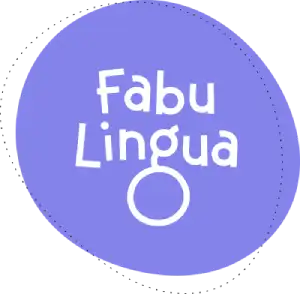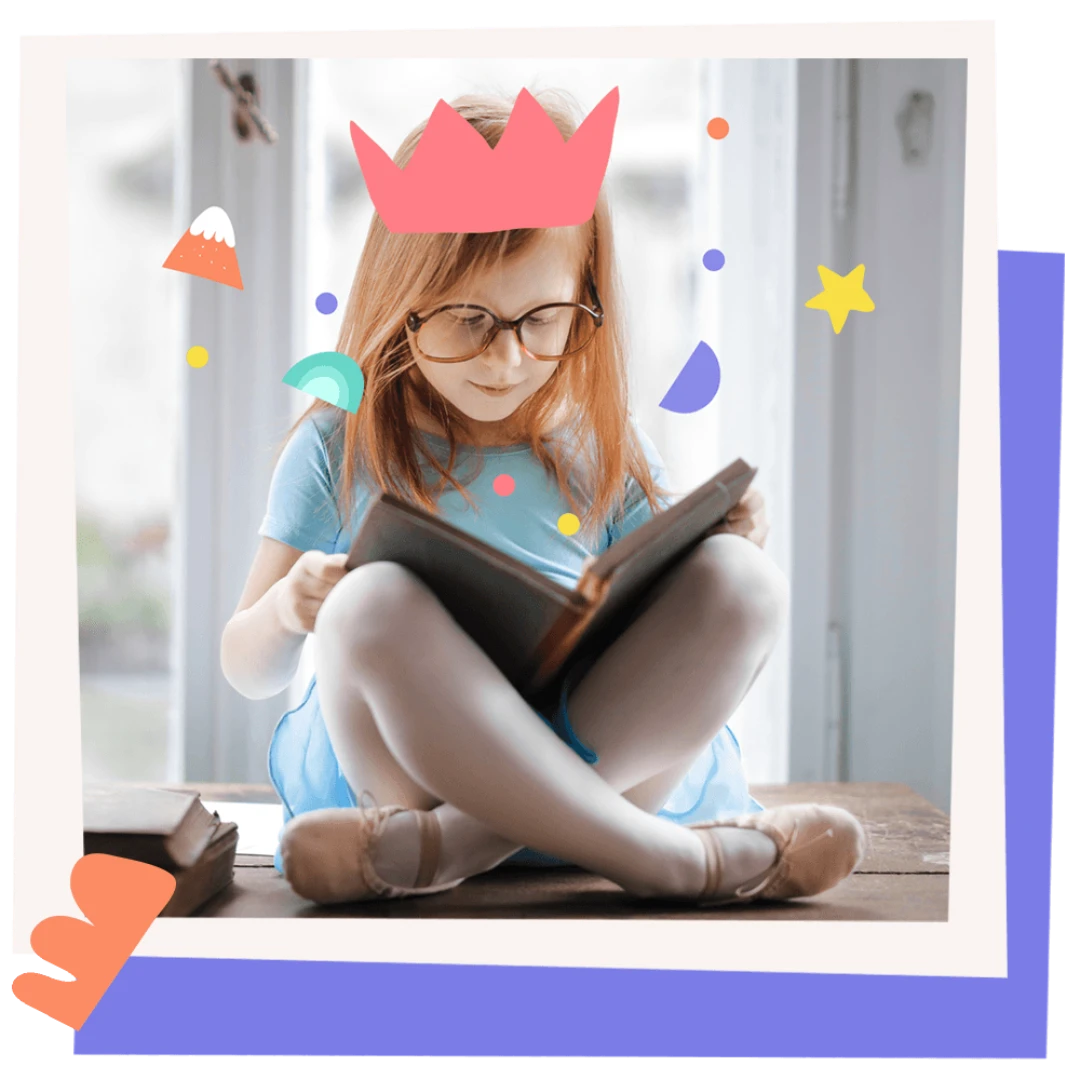In this post: We dive into the science behind why stories stick and how they can turbocharge language learning.
Curious about the benefits of storytelling? It is human nature to love hearing and telling stories. So, it’s no surprise that research shows that stories are at the heart of effective learning.
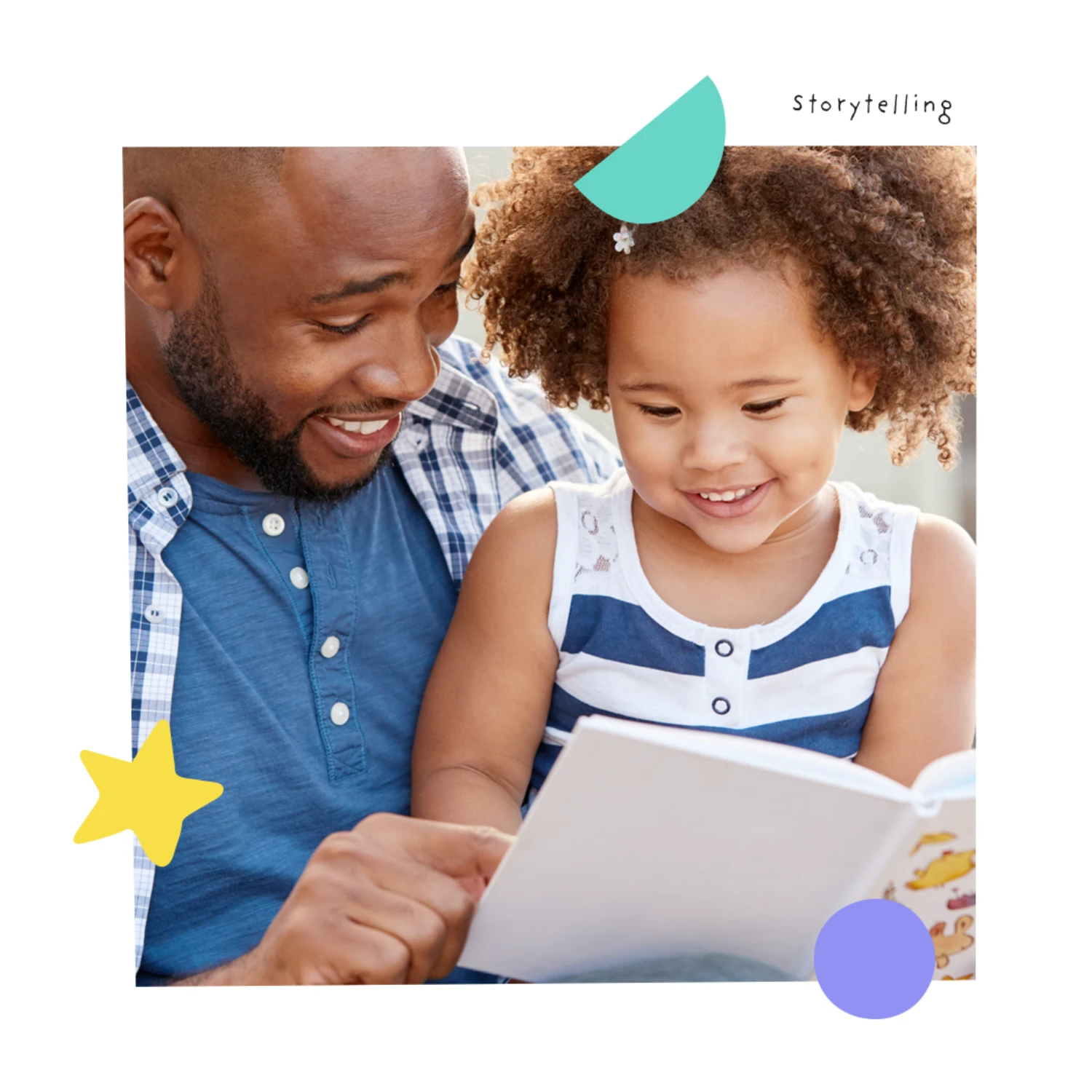
But did you know that sharing stories is also a powerful way to teach your child a foreign language?
Picture this – you’re 5 years old, sitting on the lap of your elder family member or babysitter. They pull out your favorite book – one you’ve heard hundreds of times – yet you’re still ecstatic to have it read to you once again. As each page flips, you become mesmerized by the pictures… the words… the colors! Not before long, you’re shouting, “Again! Again!,” to the reader, as they flip through the pages once more.
Maybe this has even happened to you since those early childhood days – you couldn’t stop reading the Harry Potter books as a teenager or binge-watching that Netflix series as an adult… something about the story is captivating! So, what is it about these stories that keep us in such a trance? And how do they relate to second-language learning?
Education Through Storytelling
Storytelling is the art of narration. It is a universal tradition that is ancient, dating as far back as prehistoric cave drawings.
Stories are our most traditional form of communication. They have been used to entertain, inspire, influence, and educate. Think back to Plato, who summarized his arguments in vivid myths, analogies, parables, metaphors, and allegories that took hold of people’s imaginations in a much more powerful way than did his arguments!
It’s no surprise that storytelling is a powerful tool for teaching, so why is its full potential seldom recognized?
In our modern society, stories have not been considered integral to teaching or learning activities until recently. In the past, and even still sometimes today, stories have been perceived as lightweight, soft, and not a ‘real’ learning tool. Albeit educators occasionally relate stories to lessons, it’s mainly to connect, entertain, and share experiences, rather than educate on its own.
Ever since the industrial age (and the birth of the concept of a “classroom”), teaching has been driven by the need to build a competent future workforce out of students. As the classroom has professionalized, ‘serious’ teaching techniques have dominated – from lecturing, drilling, worksheets, dictation, and rote memorization of facts. Stories have commonly been reserved for reading practice.
In the last 50 years, however, there has been somewhat of a “reflective movement” that has pushed the idea that we each possess the ability to learn and think creatively. With this movement, many new alternatives have emerged or re-surfaced for the student. From Montessori to Waldorf, Reggio Emilia, and Socratic methods in the International Baccalaureate, these alternatives include more innate ways for humans to learn, including play-based learning, project-based learning, problem-based learning, and peer-to-peer instruction and debate. Aspects of all of these have been included in most modern classrooms.
In and amongst the resurrected teaching methods of the past, we have a wave of “Education through Storytelling” making its way from pre-schools, through schools to universities (and even to the corporate world!).
We owe this renaissance of the importance of storytelling in teaching to the renowned psychologist Jerome Bruner. He was originally a professor at Harvard and then Oxford, and was courted by both Presidents Kennedy and Johnson, and later by members of the British parliament to take on Thatcher (who was the then education minister). Bruner’s research on child cognitive development and education has had deep impacts on early childhood education on both sides of the pond.
“The richest learning experience comes from narrative” – Bruner’s academic research makes it clear that storytelling is a vital learning tool. Stories are a vehicle for rich context, and it is that interaction with the context in which something is learned that is key to a person’s understanding and development.
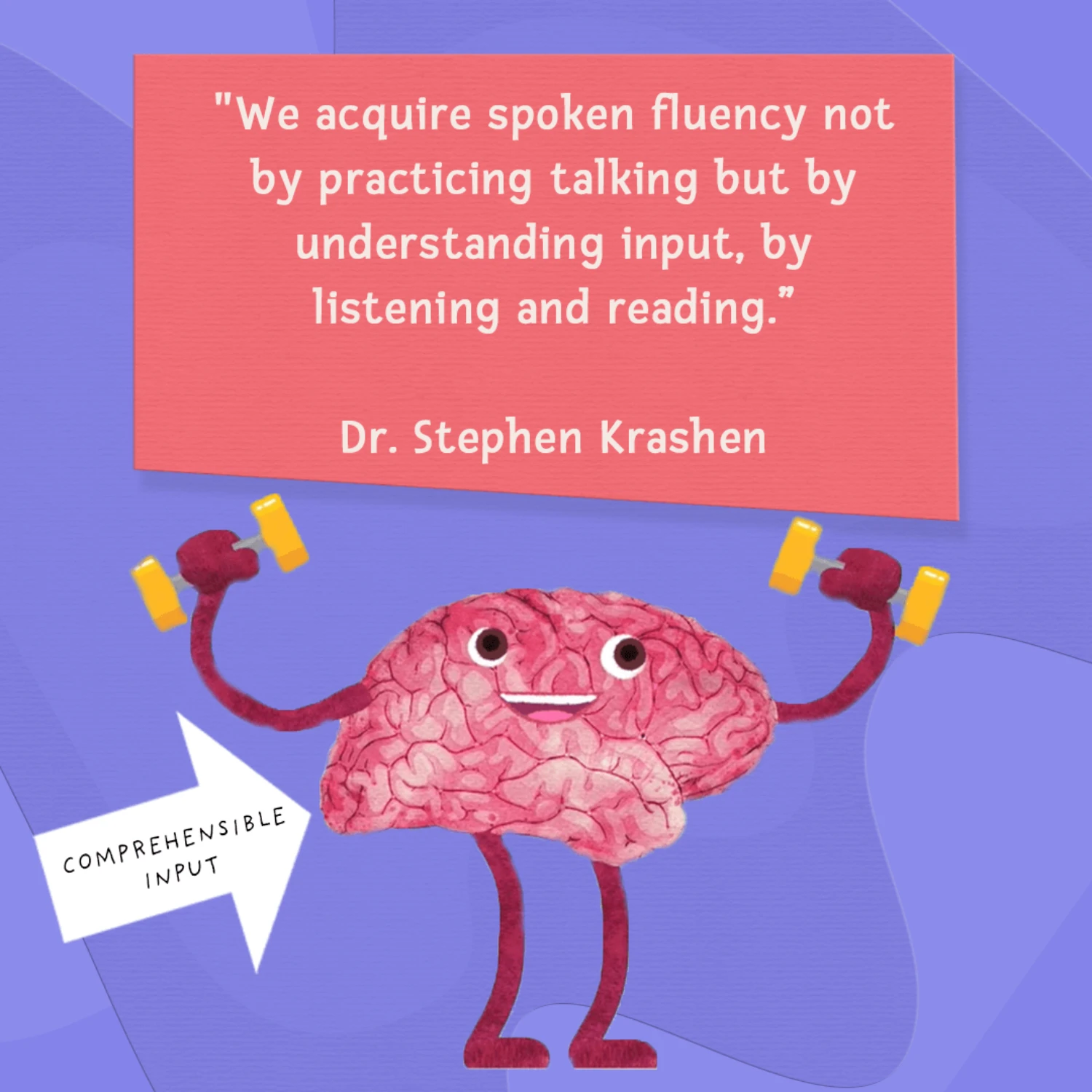
More recent research (Willingham 2004 and Arya & Maul 2012) has found that our brains are actually ‘hard wired’ to remember information that comes in a story format .” Psychologists have… referred to stories as “psychologically privileged”, meaning that our minds treat stories differently than other types of material. People find stories interesting, easy to understand, and easy to remember.”


The Storytelling Method of Teaching
Does the phrase ‘Death by Powerpoint’ ring any bells? Perhaps you just had an unwelcome flashback to your college lectures, or that painful office meeting last week, where the screen full of facts and bullet points caused you to stifle a yawn behind your strongly caffeinated beverage.

So many educators throw information onto slides, with the expectation that the listener will consume the information when, in reality, very little information is actually retained from such presentations.
Why? Because they are lacking an essential ingredient in their attempt to educate: a story.
Whether it be in the home or in the classroom, we tend to cling to these more basic, often unengaging, fact-based methods of teaching. The truth is that there are many more methods of teaching, like storytelling, that are seldom used in more serious academic settings. So, let’s explore the storytelling method of teaching a bit more…
Can you still remember your favorite childhood story? Most likely, it was one that your parents read to you countless times. It created shared memories, and to this day maybe even a few inside jokes!
No doubt you can even recite many parts of the narrative (“We’re going on a bear hunt….”), because you experienced the power of a great story: an experience that connected you on a deeper, more memorable level.
Perhaps you are even reading that same book to your child now, passing it down through the generations, because even all those years later, you still remember that treasured story.
Although it may seem crazy, there is a real reason you can still recount that story! Psychologist Jerome Bruner actually put a number on the power of a story: he found that facts are twenty times more likely to be remembered if they’re told as part of a story.
Communicating information in a way that is interesting and engaging will always be more effective for comprehension and retention than just simply hearing the plain facts. But are there other, deeper reasons why storytelling is so powerful?
Why is Storytelling Powerful?
You see, we are intrinsically wired for stories, it’s part of our human makeup. We naturally weave stories into our daily lives through our conversations and experiences and, albeit subconsciously, embrace a storytelling culture in our homes and communities.
Why? Because we yearn to connect, share experiences, and relate to each other. Bruner explains that humans are fundamentally driven by stories, that we think in stories and are only able to imagine the world through stories.
“We are storytelling creatures, and as children we acquire language to tell those stories that we have inside us.”
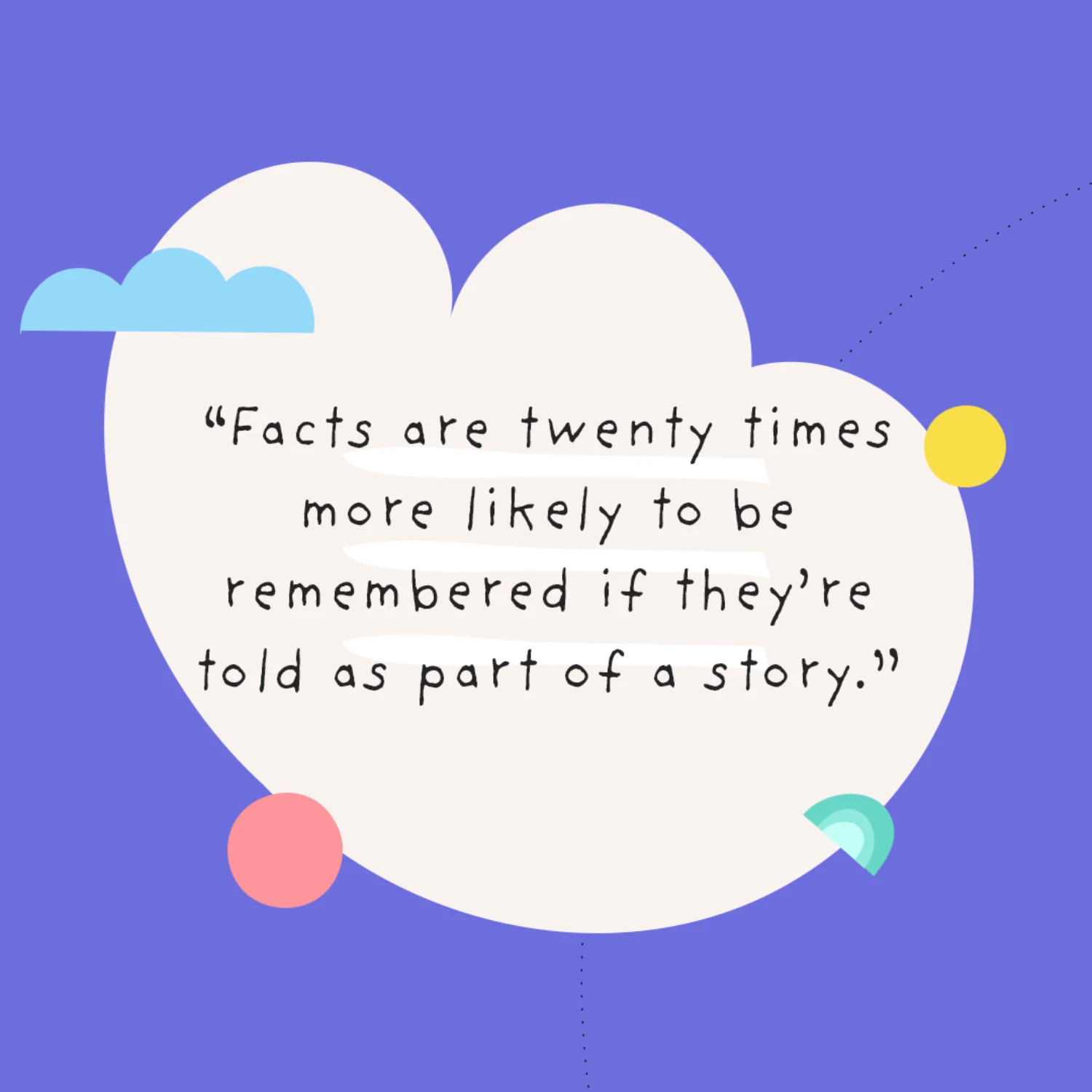
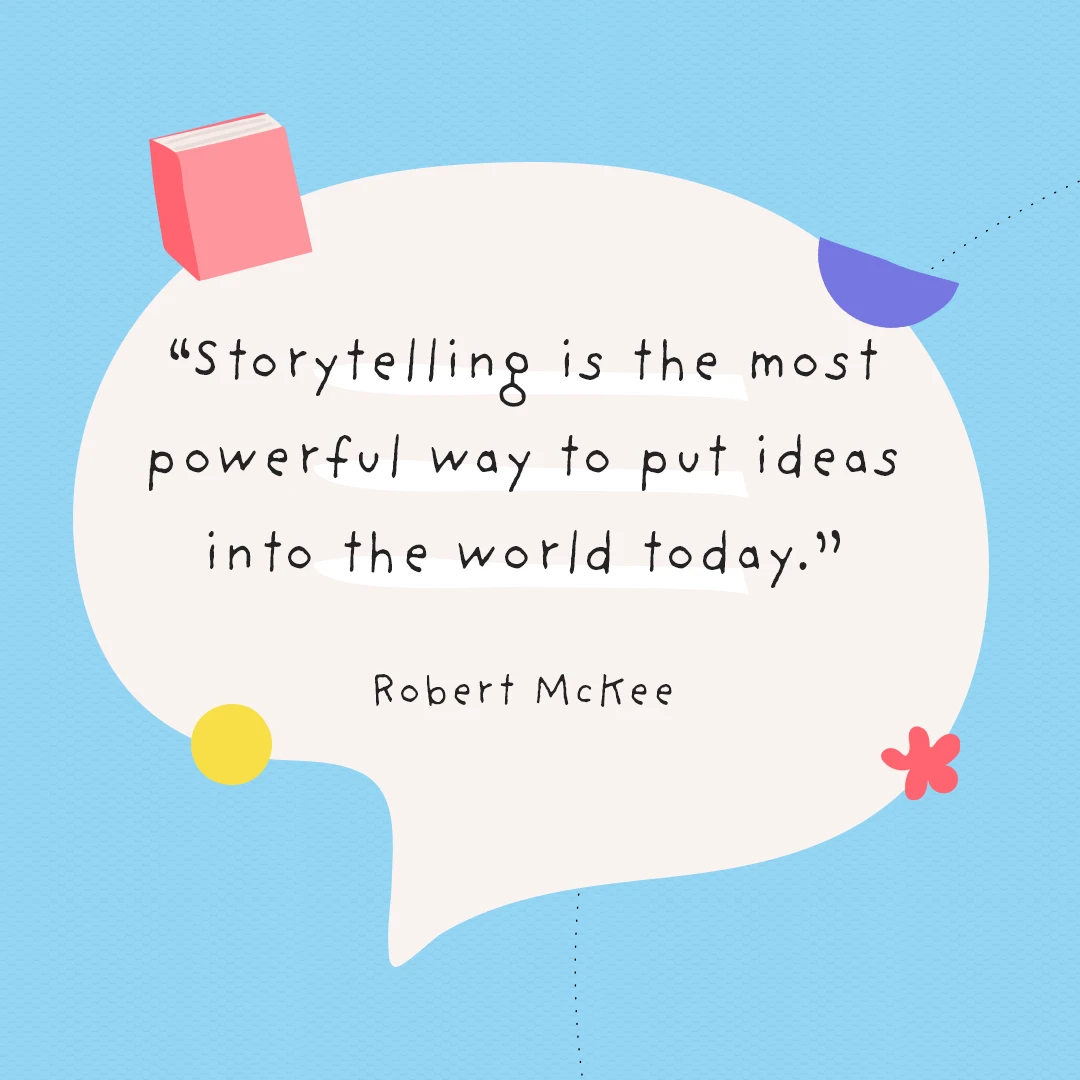
Stories are of existential importance to humans. Kenyon and Randall (1997) put it very starkly: “To be a person is to have a story. More than that, it is to be a story.”
Stories are deeply linked to our very identities, they are an intrinsic part of the human experience.
A TEDx talk by Dave Lieber, a storytelling expert, brilliantly demonstrates the power of a good story as he begins his talk with a funny, relatable and engaging story.
After sparking his audience’s interest, and commenting on their smiles and joyful engagement with his story, he cleverly shows how switching to factual information like research findings can quickly reduce their level of engagement.
Even Harvard Business Publishing is leading the way in demonstrating how businesses should be using relatable stories to train and manage their teams.
Harvard advocates for the power of a storytelling culture in businesses, advising that they should be embedding storytelling in their organizational cultures and learning programs.
In order to captivate and inspire an audience, whether that be employees or customers, successful businessmen must learn how to tell a story.
Think about it! – you’re not going to generate excitement in a potential client or motivate your employees by lazily clicking through a PowerPoint. Stories, however, will create emotion and humanize facts, allowing others to connect and be inspired by them!
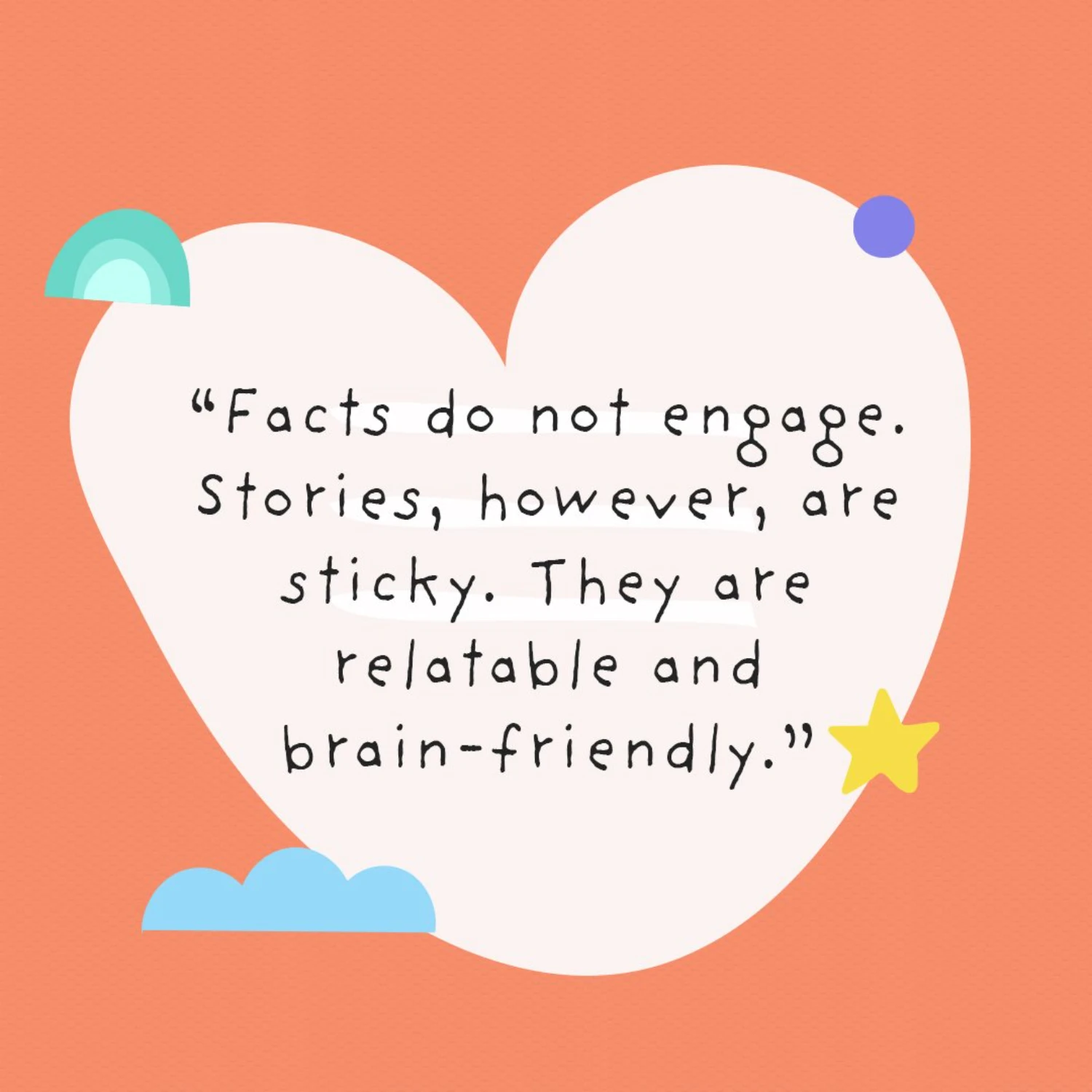

A compelling personal story engages the mind in such a way that it can change mindsets, create an emotional connection, and even increase motivation to work and learn.
To further demonstrate this phenomenon, we’ve written our own story called “The Knowledge Brothers”, a story about how two brothers called Facts and Stories work together to captivate and educate young audiences. You can read the story below:
Why is Storytelling Important for Language Learning?
Storytelling is clearly having a renaissance in the media and our corporate world. Storytelling is also crucial in academic settings, especially when it comes to learning second languages.
Here are the top reasons why storytelling is important in second language acquisition:
- Engagement: Unlike many traditional delivery methods for delivering content (think textbooks and powerpoints!) stories are deeply engaging to the human mind – we are wired to want to listen to stories. Because we want to do it, even crave to do it, this means that we’re paying attention to the material in a much deeper way, and when a student truly pays attention, it leads to better learning outcomes.
- Context: Unlike with rote learning such as grammar books, the learner hears new words in a story in context. This means they are focused on the story, not the grammar. So long as they generally understand the gist of the story, they are compelled to follow the story. As they are swept up in the story, they are less likely to get caught up in focusing on single words, and that which they don’t know, they are likely to be able to deduce its meaning by engaging in what’s actually happening in the story – the context. When learners are using the context to deduce meaning they are actively participating, which results in better retention.
- Communication: Stories develop the student’s ability to communicate. By hearing stories, the student is being exposed to a lot more new vocabulary than would ever be possible in the routine of everyday life, enriching their vocabulary bank immeasurably. They don’t just learn isolated lists of words, they learn how, when, and in what context they are said.
- A deeper, personal connection: Just like with children learning their native language, stories can connect us to a second language on a deeper level. There is a Native American saying that says:
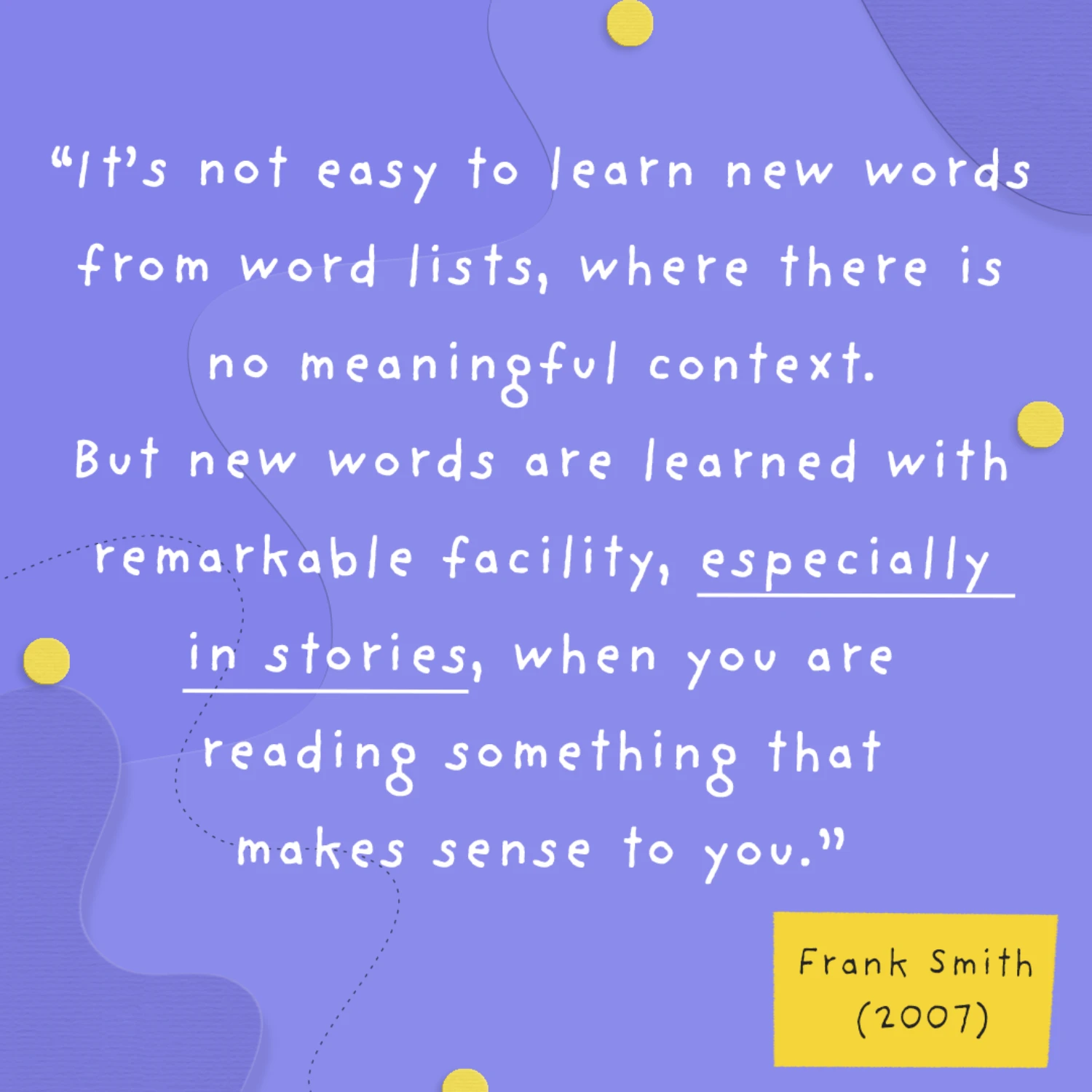
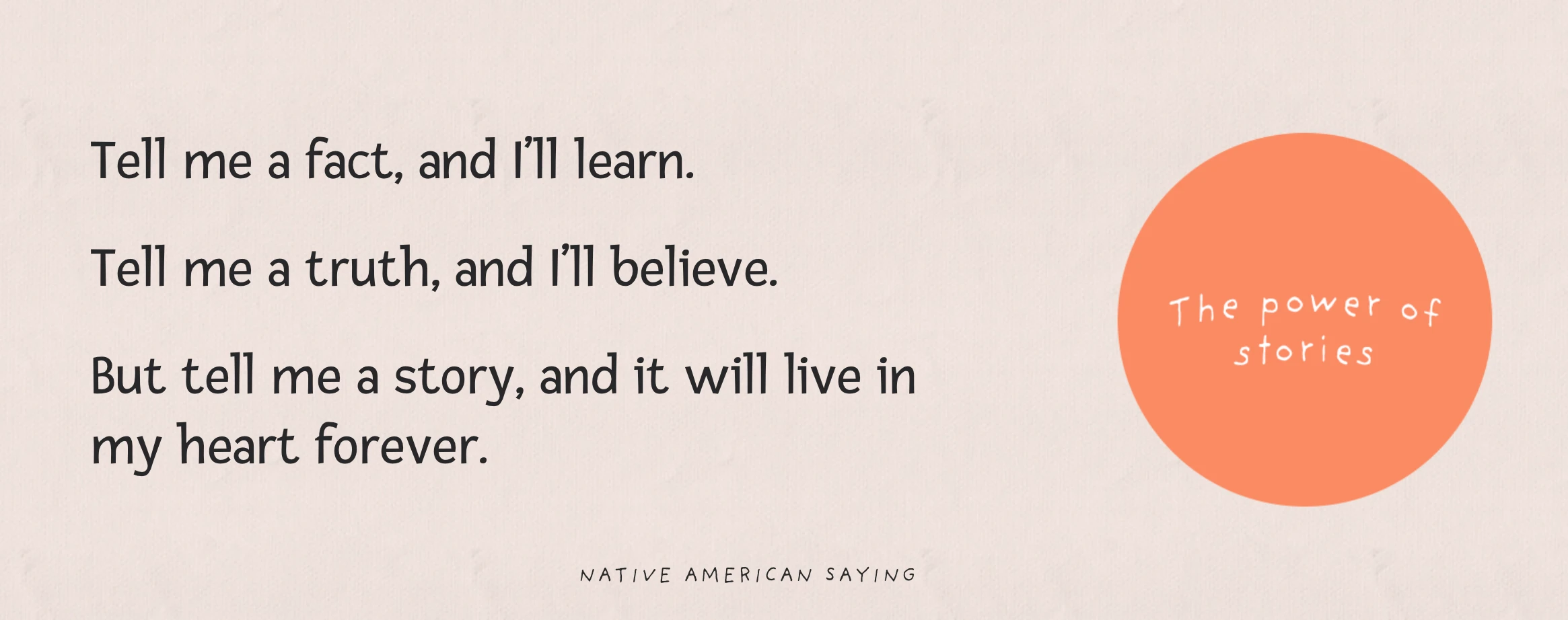
Stories often connect us not only on a brain level but a heart level. They elicit an emotional response, connecting us with the language authentically, far beyond the words on the page.
Stories cause children to discover meaningful messages as they learn about virtues, culture, and traditions while building empathy and compassion for the language and people.
Stories build empathy and cultural awareness
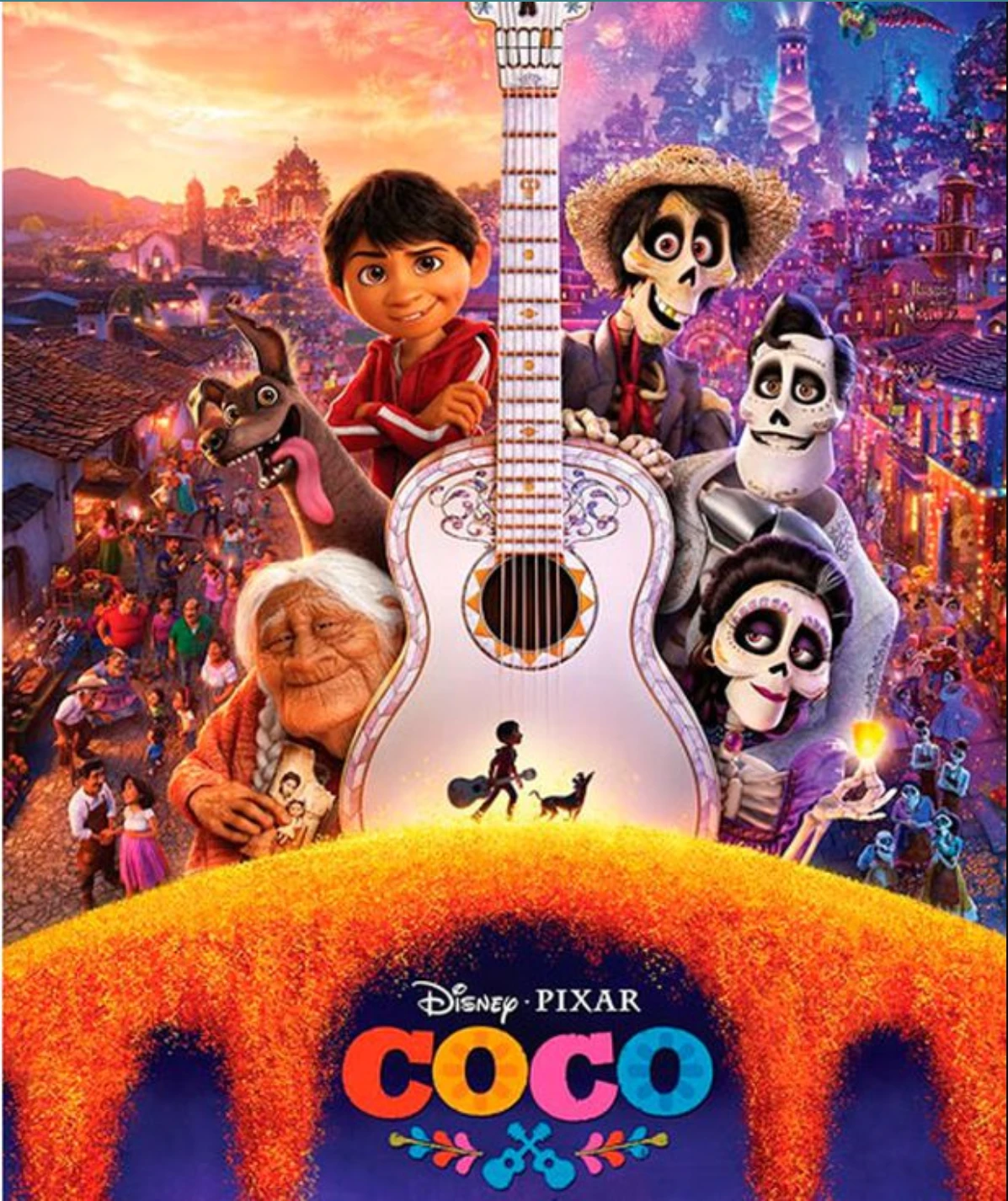
When we learn a second language we’re often not just wanting to learn the language in isolation, we want it as a passport to have insights and a connection to another culture, to another perspective. Stories are uniquely good at creating empathy for other individuals and societies, they are great vehicles for creating cultural awareness. One familiar way that stories build empathy can be seen in the movie Coco which came out in 2017.
Coco is the story of Miguel, a young boy who, although living, finds himself in the Land of the Dead. Through its intriguing and compelling storyline and vibrant colors, the movie entertains viewers of all ages. Not only that, but it educates its viewers on the Day of the Dead!
You could try to explain ‘Día de Muertos’ to a non-Latino child, but it will likely just be understood intellectually, as something outside of their own realm of life… there will be no personal connection.
However, when a child watches a movie like Coco, they get caught up in the flow of the story… They begin seeing through the eyes of protagonists like Miguel and understanding a new cultural perspective.
In a study called “How Does Fiction Reading Influence Empathy?”, researchers observed participants’ empathic levels when reading fiction and nonfiction texts. Participants were split into a fiction or nonfiction group, assigned the appropriate texts, and given relevant empathy assessments to complete when the stories were finished.
The researchers found that when readers were transported into a fiction text, meaning they were drawn into the story, their empathy levels increased over time.
In the brain, imagined experiences are processed in the same way as real experiences. Even if they are unrealistic or fantastical, we connect to stories emotionally as if they were real experiences; and, when we connect, it is inevitable that our empathy for others will increase. Fiction allows us to be transported into another person’s mind, to feel their emotions as if they were our own, even when their culture and life circumstances are very different from our own.
“War has built empires, but it is empathy and love that has sustained the human species.”
You can learn more about empathy-building in language learning in our blog “Why Bilingual is Better: Bilingualism, Language, and Cognition”.
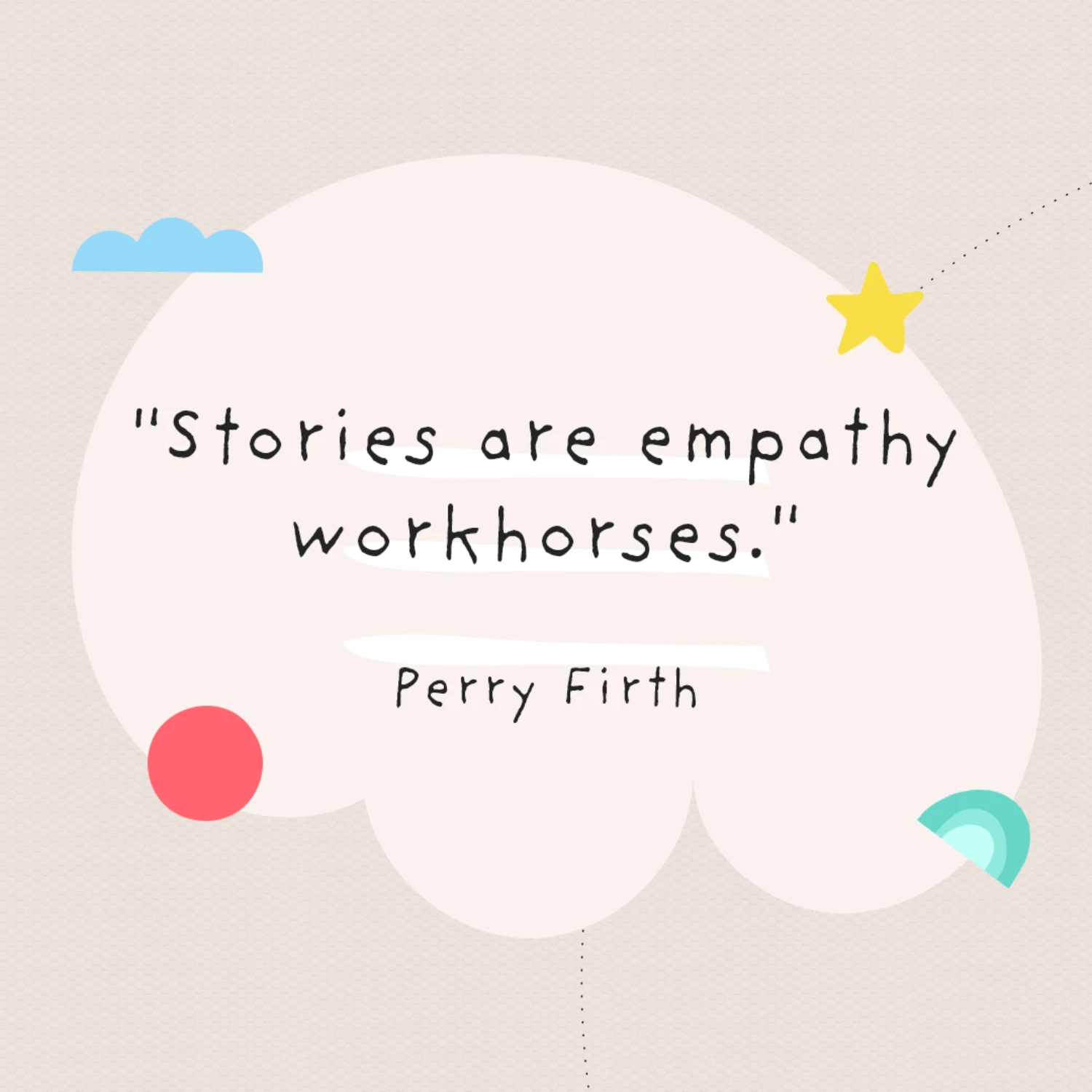
Examples of Digital Storytelling in Education
How we communicate stories has evolved greatly over the centuries: from oral traditions of word-of-mouth tales, to the emergence of the printing press and radio, to our modern-day era of technology rich with animations and visual effects.
Educational technology is a powerful, modern way to engage children in learning languages while tapping into their natural engagement with screens.
In its truest sense, “technology has given us the ability to practice our intrinsic nature as visual individuals”.
Digital storytelling brings narratives to life by combining audio, video, still images, and tactile interactions to tell a story.
Most of us have experienced the three types of learning: visual, auditory, and kinesthetic. Your children (and you!) are bound to fall into one of these categories. The beauty of digital storytelling is that it doesn’t matter which way you learn best! Interactive digital stories can appeal to each of the three modes of learning.
If you’re a visual learner, you will understand the story through still or video images. If you’re an auditory learner, you can understand the story through the speaker’s voice. If you’re a kinesthetic learner, the interactive nature of the story will have you touching characters, moving them around, and triggering animations that delight.
In another TEDx Talk, Ashely Fell explains that in our digital age, engaging stories follow the 4 i’s: They establish an interest, they instruct, they involve, and they inspire us.
Finding the right balance between under and over-stimulation can be a challenge in digital storytelling. In fact, research by Dr. John Hutton presented to the Pediatric Academic Societies found that there is a ‘Goldilocks Effect’ when it comes to a young child’s ability to process a story.
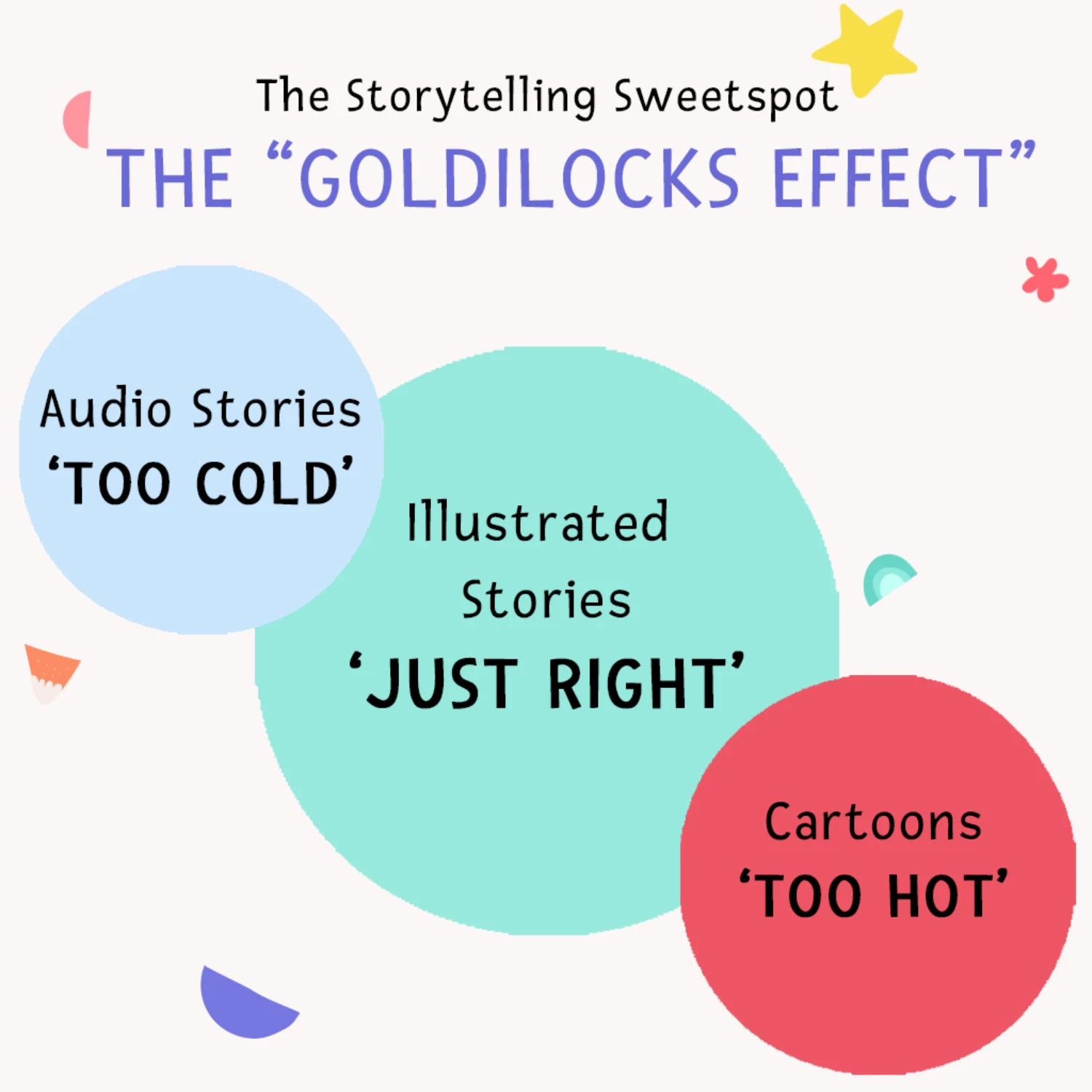
He found that listening to stories on audio, such as language learning podcasts, can be enjoyable, but the lack of visuals often causes the younger learner to lose interest quickly, they seem to require ‘more cognitive strain to process the story’. They are just “too cold”.
Cartoons, on the other side of the spectrum, are lively and colorful but often overstimulating for the child’s brain. The ‘fast-moving media renders imagination and integration less necessary’. They are just “too hot”.
This makes a lot of sense to us. It explains why oftentimes plonking your toddler down in front of the TV doesn’t seem to lead to much learning, and why reading illustrated children’s stories are ‘just right’ and persist as such a uniquely powerful teaching tool for young kids.
But how do illustrated stories perform when they are digitized to be lightly animated and interactive? A study from psychologist Erik Thiessen at Carnegie Mellon University demonstrates that there might be a direct link between these interactive, animated books and the amount of the story a child remembers.
The research shows that children could remember 15-20% more information when read to from books with digital animations and interactions (especially ones related to the plot and action).
The theory behind this is that the amount of information absorbed by the child’s mind is proportional to his level of engagement in the learning process!
Which explains why FabuLingua’s interactive, lightly animated stories are so excellent for learning a new language!
The Benefits of Telling Stories on Language Learning in Children
Listening to and reading stories isn’t just great for entertainment and education… Many times, reading can reap benefits far beyond what the eye can see.
Here are a few of the ways stories can positively impact a child:
- By developing their phonological awareness
- By increasing their memory & concentration span
- By stimulating imagination, curiosity & wonder
- By building empathy & social-emotional literacy
- By opening doors to new cultures & traditions
- By building listening & literacy skills
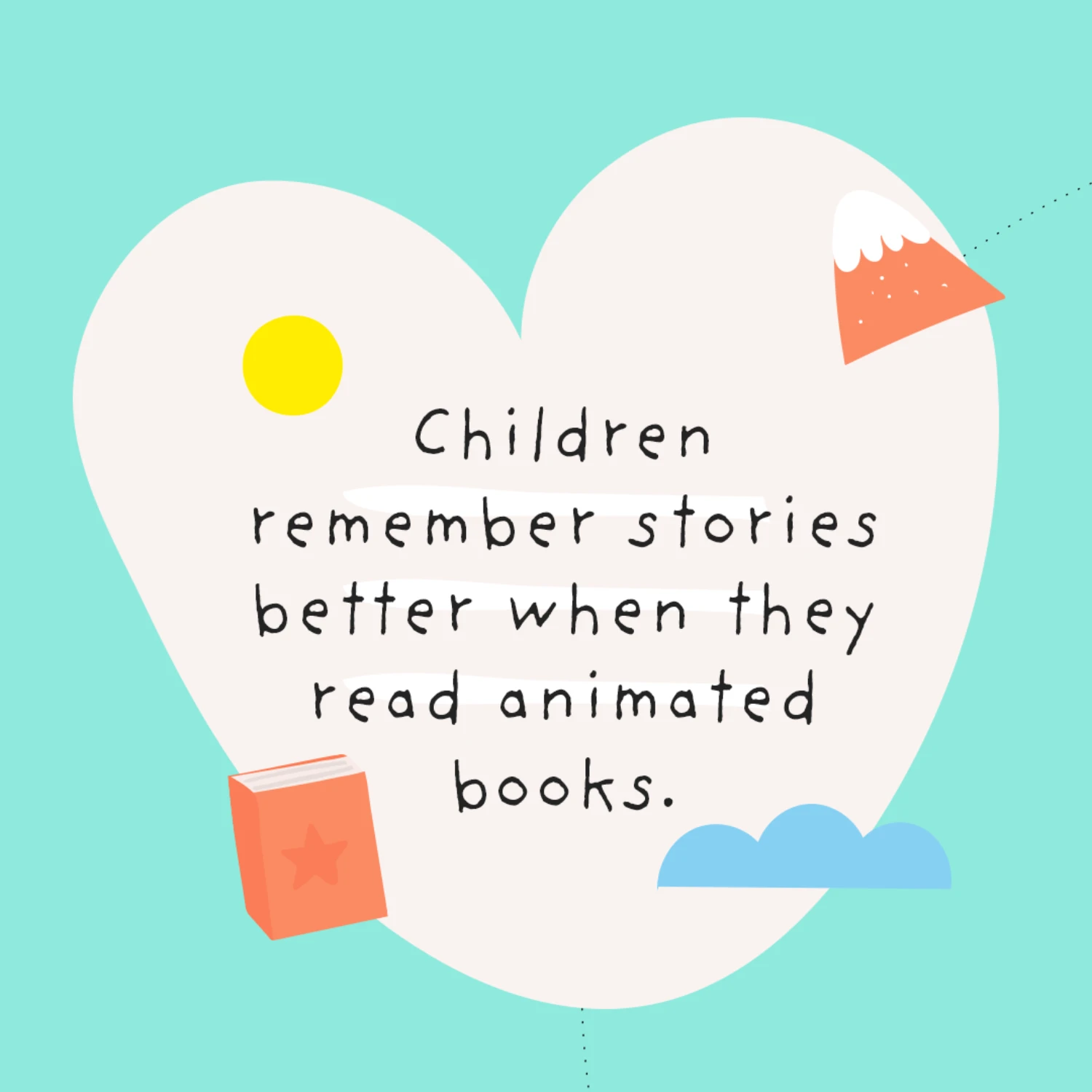
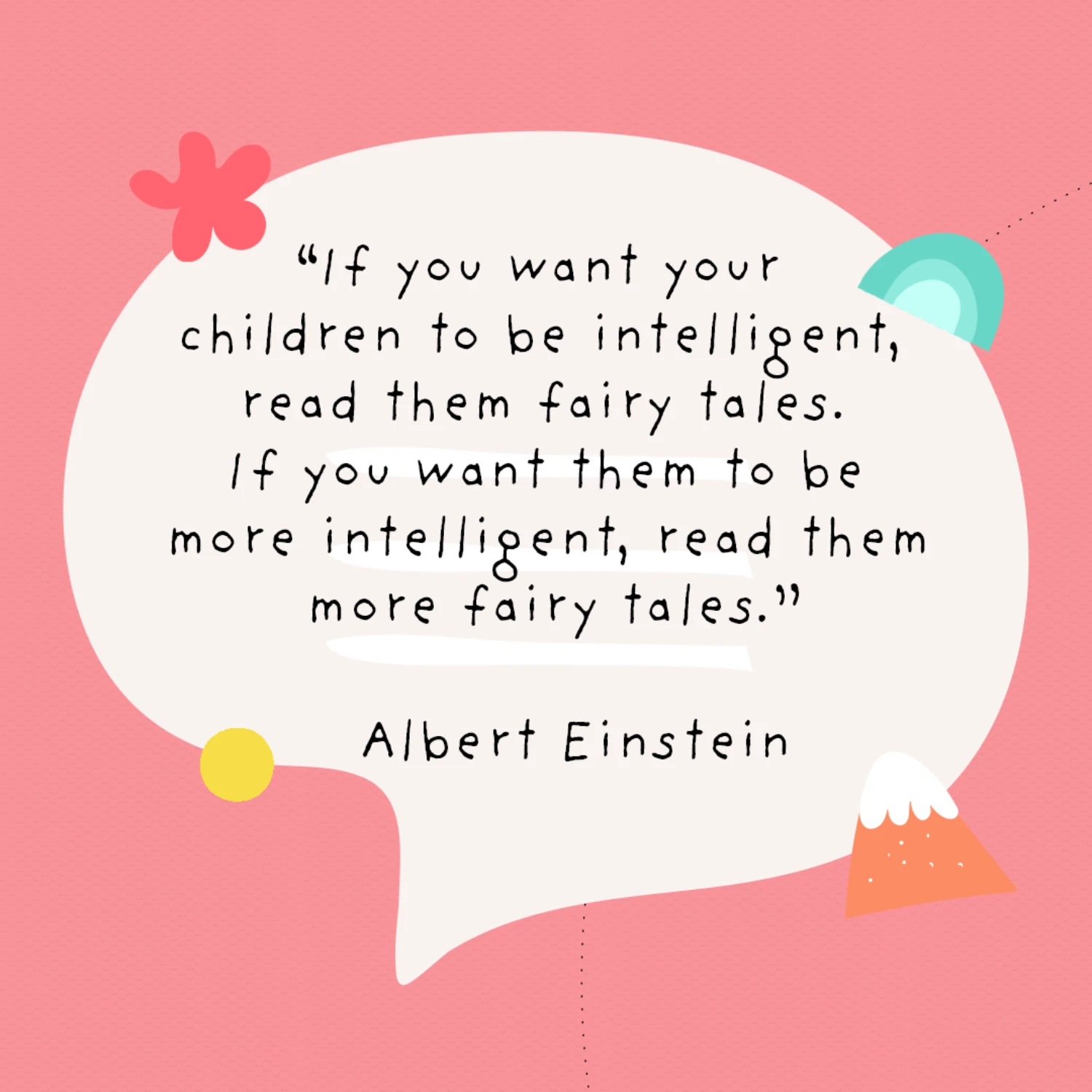
Beyond the numerous benefits of storytelling as a vehicle for educating children, we want to dive deeper into how stories impact their language learning. As we discussed in an earlier part of this blog, stories are particularly important for children acquiring a second language because they provide:
- Extremely high engagement levels. As explored at length in this post, humans (including kids!) are wired to crave stories and find them deeply compelling.
- Meaningful context from which to learn a new language. Context is essential for new language acquisition. Immersion experiences are successful because they provide large amounts of context from which to deduce meaning. Stories similarly provide a wealth of context to aid in language learning.
- In a practical sense, storytelling helps to enrich vocabulary and improve grammatical structure, both of which have obvious benefits when learning a language.
- A deeper, more heartfelt, emotion-fueled connection and understanding of the language being learned. All languages possess deep connections with their associated cultures. By exposing them to the language, you are also exposing them to the culture, thus enriching their cultural and social awareness.
Check out our recent blog on the secret to second language acquisition for more on how children process information in language learning!
The Neuroscience of Storytelling
We all appreciate a great story, but did you know that there is a whole lot of neuroscience happening when you are engaged in a story?
There are several areas of the brain that are activated when languages are being learned, including the auditory cortex ~ our memory bank! This is actually proven to be larger in bilingual people.
The brain is set up for storytelling. In fact, the neural brain endings rise when someone engages you in a great story.
Uri Hasson, professor of psychology and neuroscience at Princeton University, recorded fascinating evidence of brain wave synchronization patterns between two people during an emotional story.
Stories trigger neurochemicals, like dopamine, oxytocin, and cortisol, to be released that cause us to engage, empathize and relate to others through neural coupling and mirroring. Have a look at the diagram below for the wide-ranging effects on the brain, as outlined by Dr. Pamela Rutledge:
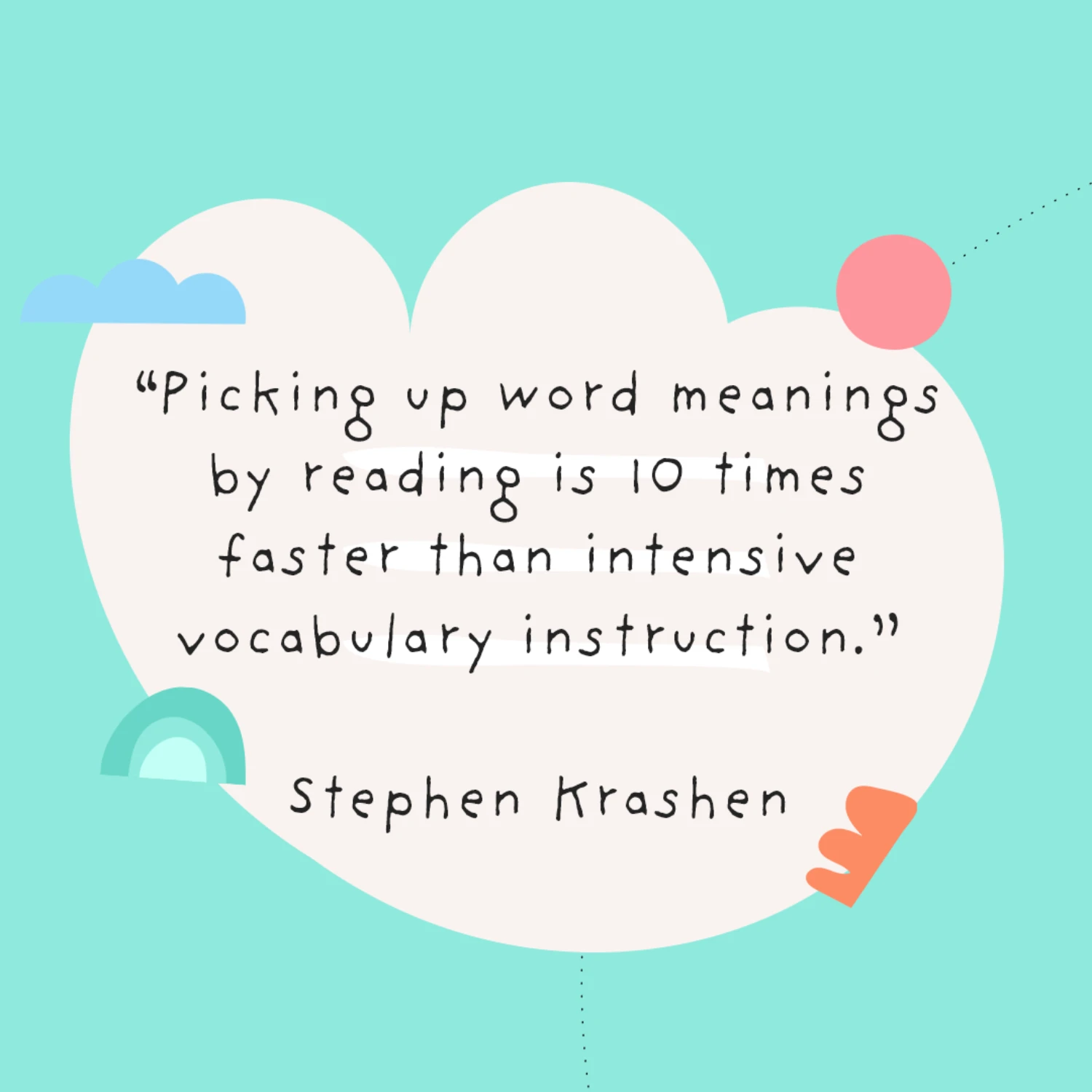
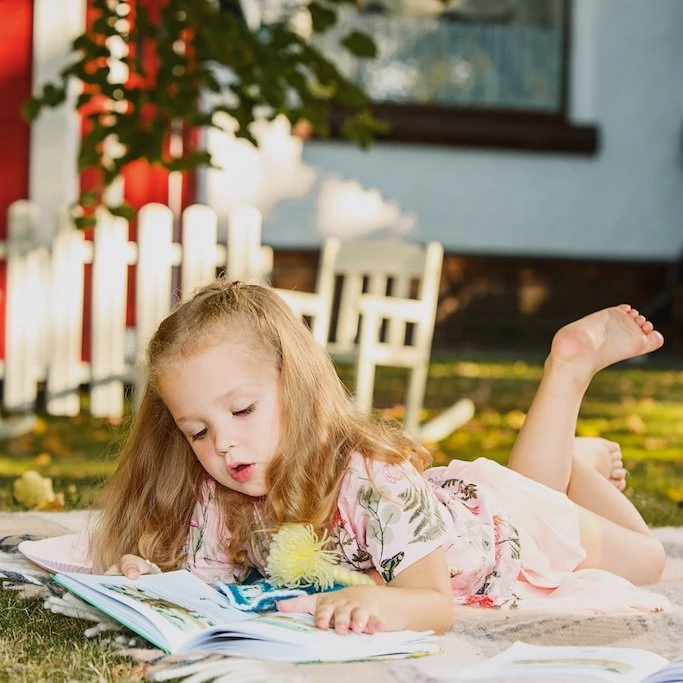

These neurological reactions just don’t happen when you are trapped in rote-learning and drilled with meaningless facts (think back to that Powerpoint presentation).
Whether you are immersed in a page-turning book or engrossed in an anecdote your friend is telling you on the phone, great stories can create bodily reactions.
Consider those thriller novels that cause your hands to start sweating or a hilarious situation that causes an outburst of laughter… stories (quite literally) move us!
The Benefits of Being Bilingual
Learning a second language has remarkable advantages beyond the more obvious communication perks and neuroscience discoveries.
Studies do indeed concur that bilingual brains are better for the following reasons:

#1: Bilingual brains have more gray and white matter
#2: Brain benefits of bilingualism include enhanced focus and attention
#3: Being bilingual fosters enhanced cognition and high executive functioning skills
#4: Becoming bilingual stimulates the development of creative and critical thinking skills
#5: The social benefits of being bilingual include greater social and emotional intelligence
#6: Being multilingual fosters a greater capacity for empathy
These are just a few brain benefits. Check out our blog on some of the social benefits of learning a second language in childhood.
All-in-all, from cognitive development to socio-emotional intelligence, to greater career prospects and even brain health, the list of benefits of being bilingual is extensive.
So how do we tap into our kid’s natural love for stories to teach them a language and pave the way for them to become bilingual?
The Power of a Great Story
At FabuLingua, we have found that stories are the perfect vehicle for language learning. That is why we created the FabuLingua app – a platform that harnesses the power of stories for effective Spanish language learning.
Our interactive digital app will teach your child Spanish through comprehensible, illustrated stories and interactive digital games, providing that sweet spot in our Goldilocks Effect.
We believe in story-based learning – that’s why we created a patented, award-winning language learning methodology rooted in stories!
As your child progresses along the Learning Path, they will unlock new stories, meet new characters and earn stickers through our integrated reward system, all while developing their language acquisition, comprehension, and literacy skills.
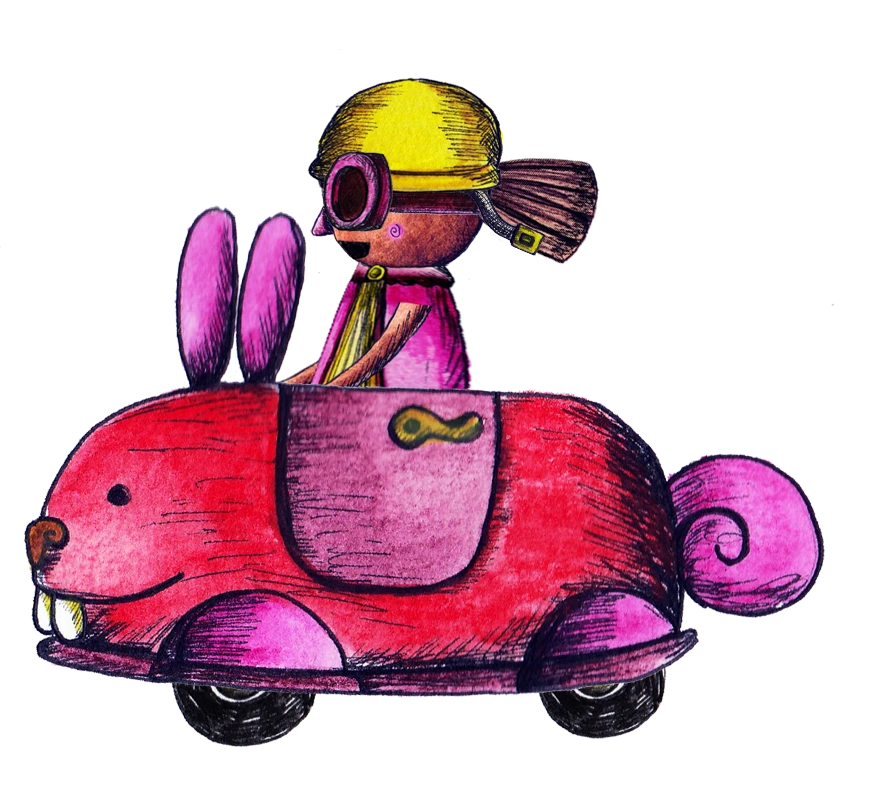
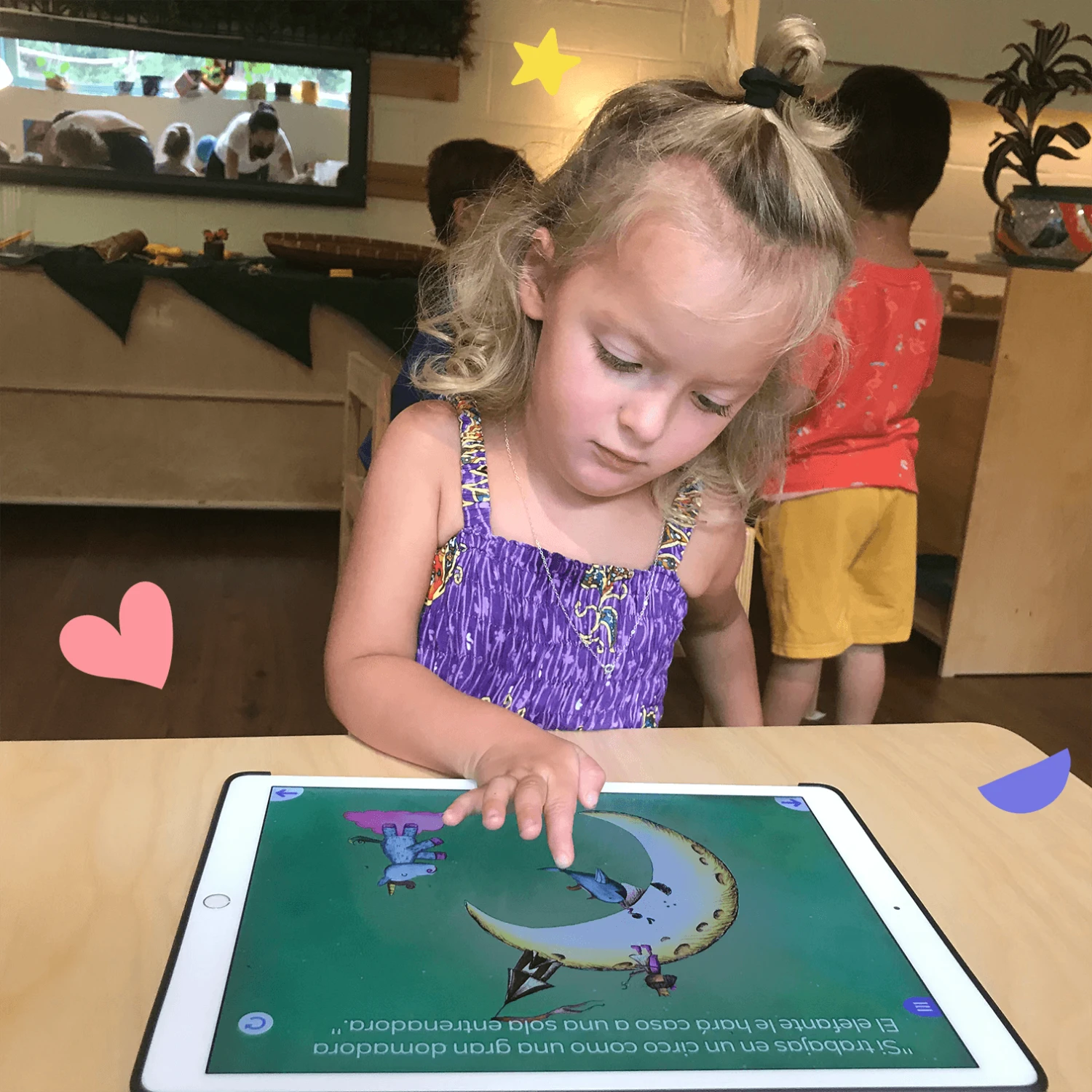
Based on modern language learning science, your child will engage in fun stories and games and learn Spanish subconsciously. We call this ‘invisible learning’ as they practice the language in a fun and effortless way.
We invite you to discover the power of storytelling for learning Spanish with 7 days free access to FabuLingua!
A world of magical stories awaits! Discover FabuLingua today>>
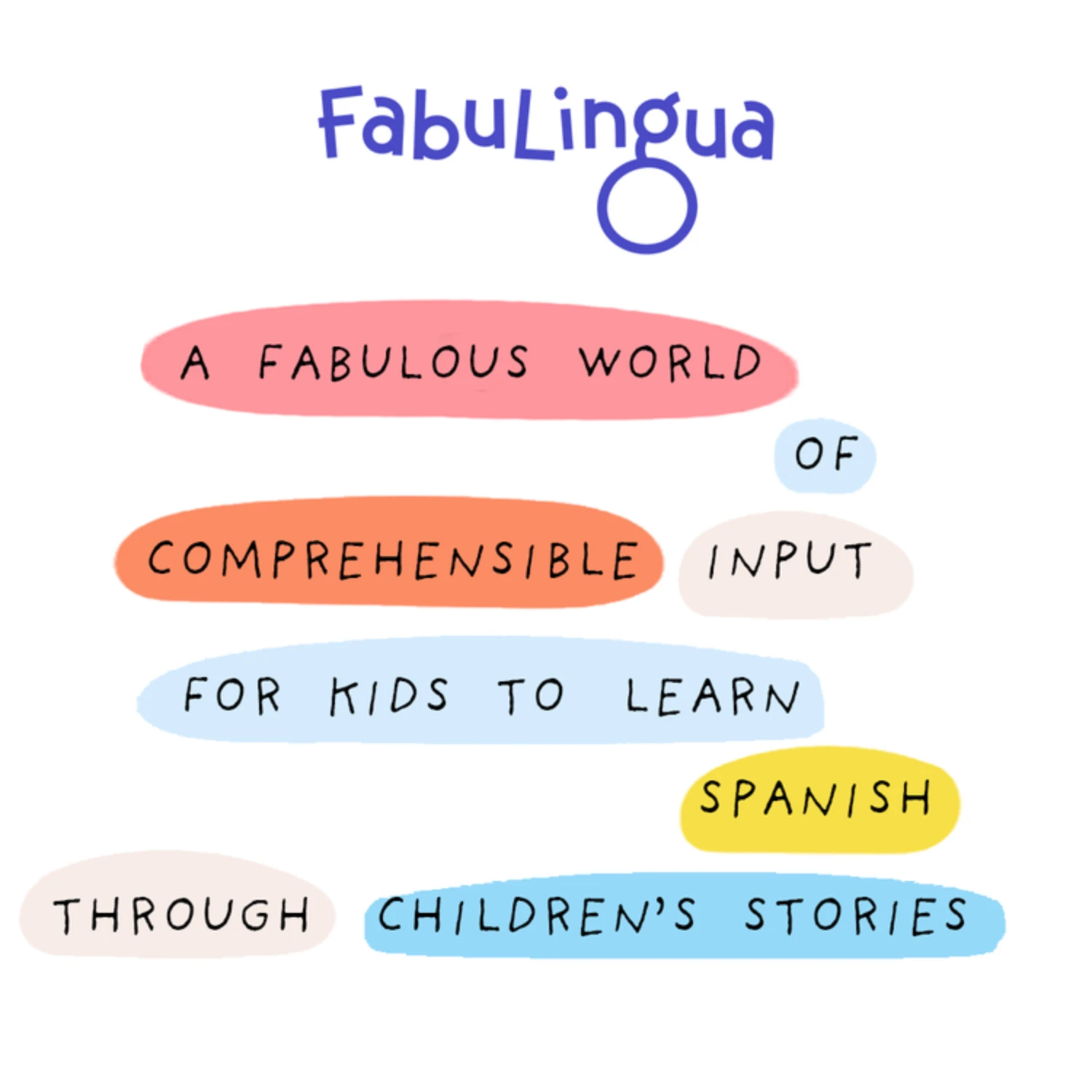
This is a guest post by Corrie Wiik, the mama behind the Spanish education blog Mama Llama Linguist. Corrie is a former Spanish teacher and is now raising bilingual children in San Diego, CA and sharing her journey and insights on her blog. Connect with her on Instagram @mamallamalinguist and follow her on Pinterest.
